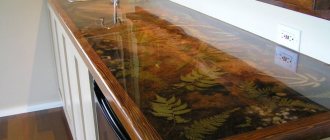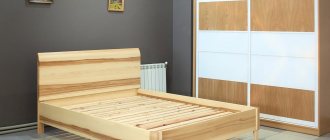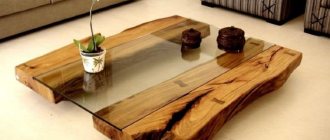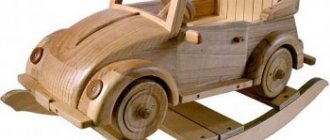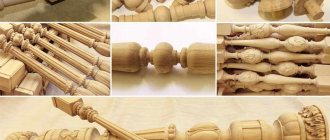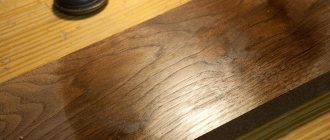Pieces of furniture will be no less beautiful - resin goes well with wood, sawdust, shavings, cuts of branches and stumps. Products made from epoxy resin and wood will help decorate any interior, and besides, the cost of such an exclusive product is quite high, and you can even make money on it.
Epoxy resin is a synthetic oligomer that contains epoxy groups. Due to the production method, it is very complex, and it is also a condensation product of bisphenol A, as well as epichlorohydrin. The material cannot be used in its original form - its condition can only be stabilized by the introduction of a hardener, and then the polymerization reaction will begin.
What is epoxy resin, properties
Epoxy is a synthetic oligomer containing epoxy groups. According to the production method, it is very complex; it is a condensation product of bisphenol A and epichlorohydrin. The material cannot be used in its original form: its condition can only be stabilized by the introduction of a hardener, after which the polymerization reaction will begin.
The composition of epoxies of different brands may also include other components - chalk, cement, alabaster, which compact the mass. The resin also goes well with aerosil, wood chips, graphite, various dyes, and aluminum powder. Various oils and other substances are also added to the composition depending on the needs of the users.
For pouring wood and other creative activities, transparent resin without fillers, which contains plasticizers and modifiers, is perfect. The material has the following properties:
- resistance to abrasives and mechanical damage;
- low wear rate;
- low moisture permeability;
- no shrinkage during operation;
- lack of reaction to the action of chemicals, with the exception of strong acids;
- excellent adhesion to wood, plastic, metal substrates, glass, ceramics, rubber and leather.
Application of material
The uses of resin are varied. It finds application in most large industrial sectors:
- electronics;
- aviation;
- machine production;
- equipment repair;
- shipbuilding;
- construction;
- fiberglass production;
- pouring floors;
- production of glue, putty, grout;
- production of paints and varnishes.
You can also work with epoxy at home. It is ideal for the manufacture and processing of furniture made of natural wood and its derivatives, slab. Using pouring, you can make an original stool, chair or table, or doors for a cabinet. Souvenirs, jewelry, watches, figurines, cutting boards and items for the kitchen, bathroom, vases, tambourines and other toys for children also turn out beautiful.
Different types and states of glue
There are different brands of epoxy resin on sale - domestic and imported. Most of them are suitable for making furniture. It is only important to decide whether colored or transparent resin is needed for decoration. Usually, in order to see beautiful cuts of wood and its fibers, transparent compounds are purchased. For example, high-quality YD-128 resin is colorless and transparent, like glass. Epoxy MG-Epox-Strong also has no complaints about transparency, and is even suitable for creating jewelry. By the way, such resins can be combined with colored resins - making bright inclusions inside the main mass.
These materials are two-component adhesives. Stabilization of the liquid resin occurs by adding a hardener, which is included in the second bottle. It will not be possible to fill furniture parts into molds with thick pastes, so you should not buy them.
There are 5 main states of resin:
- liquid - this is a material without a hardener or immediately after its introduction, has excellent fluidity;
- honey-like - resembles molasses, a slightly thickened resin, which is best used for layer-by-layer pouring of crafts;
- thick - fluidity is sharply reduced, the mass flows poorly and is only suitable for gluing parts or as putty;
- rubbery - epoxy resembles rubber or hardened plasticine, sticky, but can change shape;
- solid - fully cured resin.
Differences between resin and glue
In master classes on pouring wood products, you need to use epoxy resin, but not glue based on it. Main differences between materials:
- the curing time of the glue cannot be changed, and the freezing rate of the resin can be increased or slowed down;
- the glue turns yellow, but the resin remains transparent;
- glue has low elasticity, while resin is pliable and allows the work required by the master;
- Glue is used to join parts; it will not be possible to pour it into products; almost any figures can be made from resin.
Is resin harmful?
After hardening, the resin is completely harmless for contact with human skin: you can safely wear jewelry made from resin or touch it. You can read more about this in the article about the safety of our resin: How dangerous is epoxy resin ?
However, the situation with food is more delicate: only some resins have a certificate for safe contact with food (only cold) products (for example, our Art Pro 2.0 ):
- -15% Out of stock
Medium-thick epoxy resin for painting “Art-Pro 2.0” 3.32 kg
4660 rub. 3965 rub. More details
- Medium-thick epoxy resin for painting “Art-Pro 2.0” 830 g
Rating 5.00 out of 5
1230 rub. Add to cart
- Not available
Medium-thick epoxy resin for painting “Art-Pro 2.0” 1.66 kgRating 5.00 out of 5
2370 rub. More details
- Medium density epoxy resin for painting “Art-Pro 2.0” 332 g
710 rub. Add to cart
But in liquid form, the resin is toxic : for people, animals and the environment in general. Working with epoxy resin during mixing and catalysis (hardening process with the release of heat) should take place in a well-ventilated/ventilated area and strictly in personal protective equipment : a respirator mask, goggles, gloves, etc., especially if a person has a tendency to be allergic to “chemistry”. In terms of harmfulness, the process of working with resin can be compared to paint and varnish work.
We offer the following range of protective equipment:
- Not available
Set of nitrile gloves
Rating 5.00 out of 5
From 160 rub. More details
- Disposable polyethylene protective apron
From 60 rub. Choose …
- Open safety glasses
180 rub. Add to cart
- Disposable polyethylene sleeves
From 75 rub. Choose …
- Respirator Jeta Safety J-SET 6500
2399 rub. Choose …
- Respirator Jeta Safety J-SET 5500
2299 rub. Choose …
Pros and cons of epoxy resin for wood
Previously, epoxy was used in the form of glue for various parts; it was almost never used in creativity. Later, floors began to be filled with this material, noting its low abrasion, greater strength and durability. Now resins with dyes or in their pure form are widely used to create unique products for the home. The advantages of epoxy for wood are:
- the mass can be given any shape - it flows, fills the slightest holes, depressions and cracks;
- the frozen product is easy to grind and polish, you can drill holes in it and sharpen grooves;
- Epoxy is available in different colors, but even transparent resin can be given any shade by introducing a dye;
- Since the composition does not shrink, the furniture will remain attractive for a long time.
The product also has disadvantages. So, you need to strictly observe the proportions of resin and hardener, otherwise the mass can be irrevocably damaged. The price of resin is high, especially for transparent brands. The cost of large products will be high. Another disadvantage is the toxicity of epoxy. During work, you will have to use a respirator, gloves, goggles, and ventilate the room well. After hardening, the composition is safe.
Jewelry and souvenirs
The specificity of wood blanks does not allow them to be used for decorating epoxy bracelets and rings. The exception is small wooden products, but these are very rare. But in the manufacture of pendants, pendants and souvenirs, wood is both a decor, a connecting element, and a filler. Wood is used in any form, from plywood to cross-cut. The work of a craftsman involves the need for complex woodworking tools. Gradually, a hobby develops into a profession. Those craftsmen who share their experience on the Internet have been working with resin professionally for a long time, and their products are in demand.
To prepare a cross cut, it is best to take not a trunk, but a tree branch. The pattern will also be visible on this cut. To highlight it, the surface is treated with stain. The difficulty lies in cutting an element of a suitable shape and size from the workpiece. After priming comes pouring. The resulting pendant doesn’t even require any special fittings. A hole for a cord is drilled in it and you get a beautiful souvenir.
There are many ideas for creating jewelry from longitudinal cuts.
The shape of the product depends on the existing mold. Most often, keychains are made from epoxy and wood. The unique properties of the resin allow it to be processed after curing. By grinding, the thickness of the product is reduced, turning it into a pendant that can be worn on the body.
Features of working with epoxy
Wood is not homogeneous in structure, so air can accumulate inside its parts, around which a vacuum forms. After a change in temperature, the material expands or contracts, so before it completely hardens, air bubbles often appear on the surface, released from the internal cavities of the wood.
To avoid defects, you need to stabilize the temperature in the room for 2-3 hours after pouring the epoxy. It is advisable not to work outside or choose a time after lunch when the sun is not so hot. If you intend to apply a thick layer of epoxy, it is better to divide the work into 2 stages. The risk of bubbles appearing in thin layers is lower.
Impregnating wood with epoxy
To ensure high-quality impregnation of wood with an epoxy composition, the base, on the contrary, is heated. After the pores of the wood expand, they will perfectly absorb the mass, which will also become very liquid upon contact with a hot surface. After the impregnated wood has hardened, it is covered with a finishing layer. When drying, you will again have to control the temperature so that air does not escape to the surface.
Eliminating air bubbles
It happens that bubbles still appear on the top of the fill. There is no need to heat the product, this may cause the formation of new bubbles. It is better to use a thin needle to pierce the balloons. Another option for removing them is to spray the resin with alcohol from a spray bottle. Although in this case there is a risk of changing the color or degree of transparency of the mass. Large bubbles are removed after the resin has hardened. They are drilled, cleaned, degreased and filled again.
How to choose the right epoxy for wood
All epoxy resins used for work are divided into two large groups. This:
- Construction materials. They are used in various industries. And also for repair, tuning, shipbuilding, etc. For this group of epoxies, the substance requires increased impact resistance and hardness.
- Decorative (or jewelry). These materials are most suitable for design ideas. They are transparent and allow you to see the entire structure of the tree. They are also actively used to create paintings, jewelry, sculptures and various souvenirs.
Jewelry epoxy resins are used for design work. Their important quality is resistance to ultraviolet radiation (the coatings do not turn yellow over a long period of time). The advantages also include increased fluidity. But decorative epoxies have a higher price.
The modern market of finishing materials offers a fairly extensive line of epoxy resins. To avoid confusion when choosing, consider the following recommendations:
- To fill large surfaces, such as countertops or bar counters, a thick layer of epoxy is required. Moreover, the mass should not overheat and turn yellow. For this task, Epoxy River brand resin is the best choice.
- For smaller jobs, universal epoxy is better suited. It hardens quite quickly and can be poured with either a thin coating or a thick layer. For such purposes, choose Aquaglass Citrus.
- And to create unique jewelry and costume jewelry, an important requirement for the resin is the absence of toxicity, resistance to deformation and yellowing, and economical use. Considering that such work is carried out at home, the safest is resin from Diamant.
Using Resin - Design Options
Transparent optical fill resins are ideal for combinations with wood. Any designer “things” will be visible through them - crumbs, sawdust, metal elements. If you decide to add a color, it is better to buy it from the same brand so that there are no problems with mixing.
Colored masses are usually cloudy and are not used for basic filling. But filling the pores of wood, voids from knots, and bark beetle passages with a colored composition looks beautiful. For example, a shelf or bar counter in which the cracks are painted with resin with luminescent dyes will be unique. Then the furniture will glow on its own.
There are other interesting design techniques. So, adding a drop of water to the resin will result in milky stains. Drops also make beautiful inclusions in colored epoxy.
Furniture with cut
The furniture looks unusual, resembling a piece of jewelry - its parts are cut. For example, a beautiful stump is enclosed in a transparent cube, ground, polished and given clear edges. The product can be used as a table, chair, or simply installed as an interior element.
Solid board table
To create a designer table, they use the technique of painting grooves and holes, which you can make yourself. Any type of wood will do. You can take a single piece or make a tabletop from glued strips. To prevent the colored resin from leaking out, the inside of the board is sealed with paper tape, which is removed after hardening. The hardened resin is sanded and then varnished.
Filling table
This method of creating furniture is more complex. Thick glass or plywood is used as a base for decoration, which is shaped into the shape of the future table. Light decorative elements must be glued, because they can float. Next, they make a side that will hold the epoxy on the base. It is carefully nailed down with furniture nails.
The base must be dry before pouring. Wood pores are treated with epoxy primer. At one time, make a fill no more than 1 cm thick. Large pieces of wood and stones will have to be hidden in resin several times, doing the work in layers. Each stage is carried out two days after the previous one. The table can be used only after 7 days; after the same period, it is ground and polished if necessary. It is advisable to varnish the filling tables - this will reduce the risk of minor defects.
Shelves
To create luminous or regular shelves, use boards of the required size. Areas affected by mold and fungus are removed using hand tools. Next, the resin is mixed with dye, selecting the desired color. The back side of the board is sealed with tape, and the pores are filled with a coloring compound. After drying, a layer of transparent resin is applied. At the end of the work, the surface is varnished.
Table with map inside
Such a table is made in a similar way, only they select a cut from a tree trunk with many cracks, stains, and branches. They drill holes that imitate a map of the world - seas, oceans. Afterwards the product is poured, coloring the resin in the desired colors.
Ice in the house
The bar counter or table top can be made to resemble a block of ice. Such plates are cast in molds with “cracks” made of colored resin inside. The use of such a product in the interior will be a unique design technique.
LED lamp made of wood and epoxy
You can even make night lights and lamps yourself from epoxy resin. In such a device, a diode lamp is attached to the bottom of the frame; it also serves as a stand. The operating procedure is as follows:
- From pieces of chipboard, assemble a box 33x20 cm with strict adherence to angles of 90 degrees; it will serve as a form for pouring.
- Place the box on a flat base, tighten it with clamps, and seal the cracks with sealant.
- Dilute dark resin and pour it in a thin layer.
- After curing, lay a piece of wood with the bark inside and decorate with decor (for example, dry moss).
- Pour transparent resin on top (3 cm thick).
- Allow the product to dry.
- Attach it to the lamp.
Resin jewelry
To make rings, keychains, pendants, earrings and other jewelry yourself, you need to purchase suitable casting molds - silicone molds. You will also need high quality transparent resin, decor - rhinestones, glitter, beads, sequins.
Decorations with dried flowers
To make such jewelry, you need to prepare the flowers in advance. Forget-me-not, speedwell, heather, small roses or individual petals and buds look beautiful. Stencils of the desired shape are drawn on paper and laid out on a clean surface covered with film. The top of the stencils is covered with multifors.
The finished diluted resin begins to be applied directly to the multifora, carefully distributing it according to the stencil, using a wooden stick until a height of 2-3 cm is reached. Then the mass is covered on top with a dome mold - this option is ideal for making earrings and pendants. After a day, remove the blanks from the multifora, remove the dome, and polish it well. The work is repeated, only dried flowers are placed inside the workpiece. Afterwards, both halves are glued together.
Bracelets
To work, you will need special molds for bracelets, resin, a mixing container, a stick and any decor. Place the filler in a dry mold and carefully pour in the resin (in a thin stream). Straighten the decor with a toothpick and puncture air bubbles. Allow the workpiece to harden (24 hours), then polish it and remove it from the mold. To add gloss, the bracelet is coated with varnish.
Colored resin products
Any decorations can be made not only from transparent, but also from colored epoxy. There are dyes of all colors of the rainbow, luminescent and fluorescent colors on sale. The work of pouring jewelry will be similar, only the resin is pre-colored with dry pigment. Knead it carefully, strictly in a circle, so that no air bubbles appear. The workpieces are covered with lids to prevent dust from getting on them.
Some people prefer to fill whole blocks and then cut out sets of decorations from them. By the way, when decorating them, it is quite possible to use wood - tiny twigs, twigs, sawdust. This will give the jewelry uniqueness and originality, allowing you to create a real designer accessory.
Filling Features
In any of its manifestations, wood is well bonded with epoxy resin, but this does not eliminate some problems. Most of these problems are global in nature, so there is no need to provide specific examples of work algorithms. Let us highlight the general nuances that every master should take into account.
A slab or solid wood simultaneously plays the role of a base and decoration. It must be remembered that the density of wood is less than the density of resin, so when pouring in one layer, wooden fragments may begin to float. In order to avoid calculating the buoyancy force, it is easier to prevent this phenomenon. To do this, pour the first layer of resin, about 1-1.5 mm thick, which will act as an adhesive composition. Decorative fragments are glued to the resin. After the resin has completely hardened, you can continue pouring.
When pouring countertops, several fragments of solid wood are used, which are located at different levels. Thus, a kind of three-dimensional picture is formed. When pouring layer-by-layer, there are usually no problems. If it was decided to pour the resin in one layer, then these fragments are fastened together by any available means.
It is quite a big problem to pour a piece of wood into a lens or sphere when making jewelry; it will definitely float up. There are several ways here. The first is to first pour a layer of epoxy resin to the level where you want the decorative element to be located. You can safely let it float and wait for the resin to cure. Then the remaining compound is poured. The second way is to hold a piece of wood with a thin wire.
All wood has pores. When liquid resin begins to fill them, air comes out of the pores. Even if the composition has undergone a vacuum procedure, this will not eliminate the formation of bubbles. The way out of this situation is pre-impregnation. Wooden elements must be coated with colorless primer. In the absence of a special composition, you can use the same resin from which the product will be made. Filling should begin only after the soil has completely hardened or the impregnating layer of resin has cured.
Using wood with epoxy resin as the main material, it is necessary to pay due attention to the preparatory process. After processing wood, dust and small sawdust accumulate on its surface and in various pores. If they are not removed, they will float in the resin, forming suspensions. This nuance once again confirms the need for preliminary priming. Even if all particles could not be removed, they will be retained by a layer of primer.
Good to know > How to create stunning epoxy resin pendants
Processing of products after the resin has hardened
After the substance hardens, the product acquires a cloudy, rough structure and requires finishing. Beginners sincerely believe that they did not cope with the work and the craft was not a success.
Epoxy resin has good elasticity, so the product can be easily transformed with sandpaper. During sanding, you should protect your breathing organs with a respirator, and lightly moisten the sandpaper with water. This is done to ensure that fine fractions of epoxy dust do not enter the air and harm the body.
